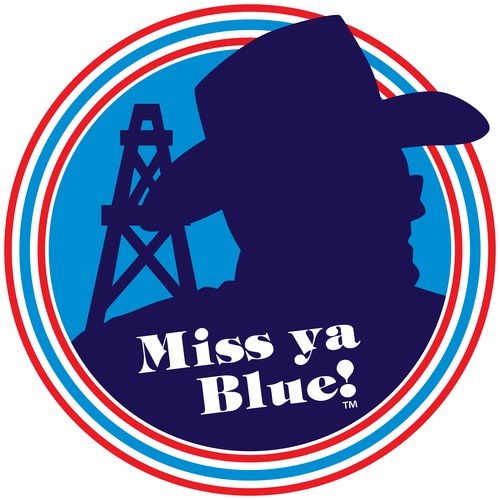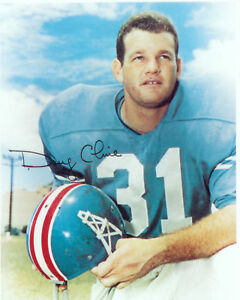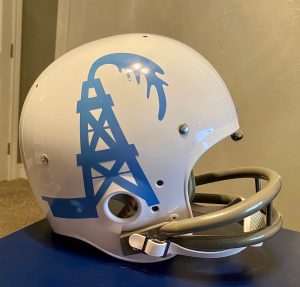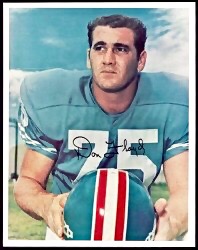Bob Talamini: Criminally Underrated

To most football fans, it’s no secret that offensive linemen almost always fly well below the radar.
Typically, if a lineman is popular, he’s probably a left tackle who has been an anchor for his franchise and signed a very large contract, or he’s had a movie made about him.
The only other reason that his name may make headlines is after a poor game in which he gave up too many sacks or pressures, or goofed on a costly penalty.
Linemen know that their position is not glamorous, and they must sacrifice their own stardom to get their teammates’ names in the paper.
If a quarterback has a great game, he can thank his linemen for the clean pocket from which the quarterback threw.
If a running back rumbles for over 100 yards, he can thank his linemen for the holes that repeatedly gave him open spaces past the trainwrecks at the line of scrimmage.
If a wide receiver racks up big yardage, he can thank his linemen for giving the quarterback a throwing lane and time to use it.
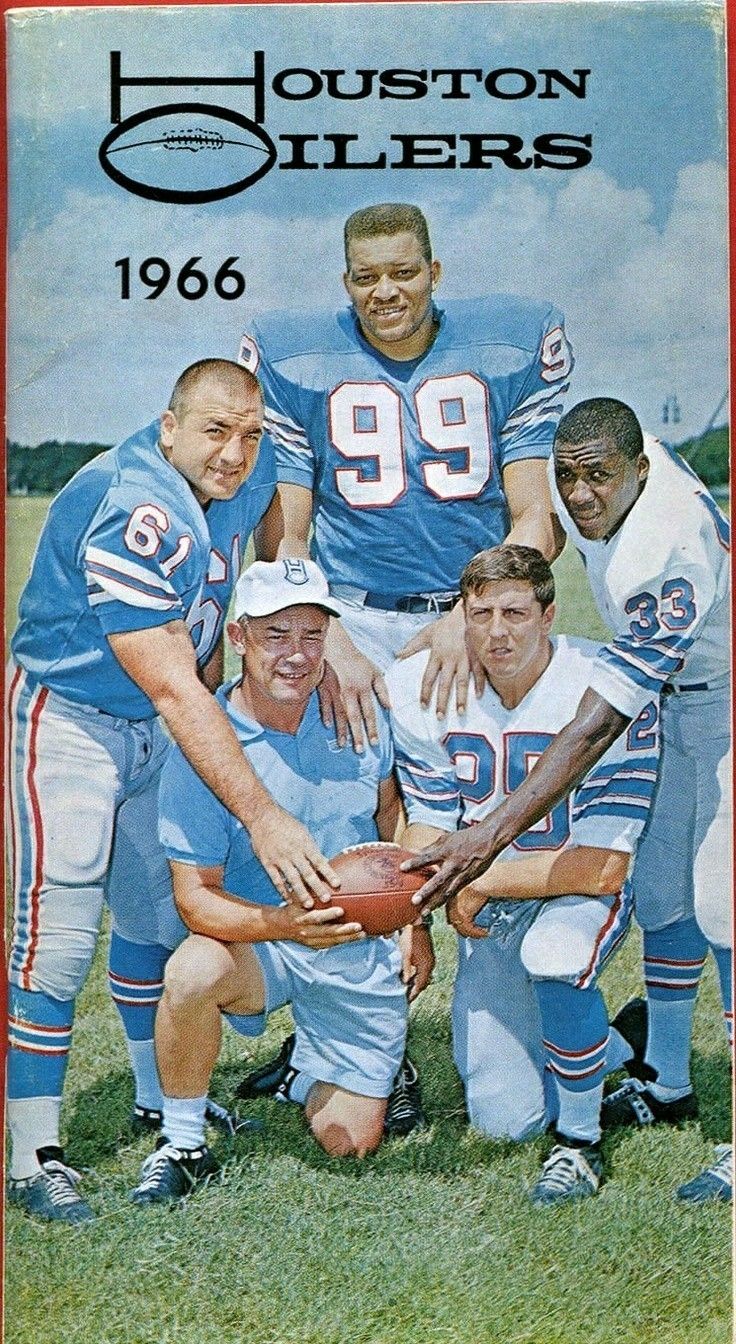
As one of those linemen, Bob Talamini has flown well below the radar of Oilers history, often overlooked and unmentioned as one of the early cornerstones of the franchise.
Standing only 6-foot-1 and weighing 250 pounds, he proved to be a bodyguard who would make the Secret Service green with envy.
However, “secret” was unfortunately the narrative about Talamini for his entire career.
At his small high school in Louisville, Ky., Talamini did not see the field until his senior season.
Although Talamini performed very well that season, he thought his playing career was over until his head coach phoned to tell him that a teammate would not be able to represent the school in the Kentucky All-State game.
The coach asked Talamini if he would be able to substitute.
Talamini agreed and arrived at the game without his name on the program or the coaches’ rosters.
Afterward, Talamini again thought his playing career was over, but, like before, he was wrong.
During the all-state game, University of Kentucky Head Coach Blanton Collier saw Talamini’s talent and offered him a scholarship to play offensive line and linebacker for the Wildcats.
While at Kentucky, Talamini was an iron-man athlete, playing full-time on both offense and defense.
Talamini made somewhat of a name for himself in his senior season when he earned Honorable Mention All-American and Third-Team All-SEC honors in 1959.
Unfortunately, he was not invited to any postseason games to display his skills.
Once again, Talamini prepared to walk away from the sport, content with all he had accomplished in his career until yet another phone call came.
This call came from Oilers general counselor Adrian Burk and was a pointed conversation that lasted just two minutes.
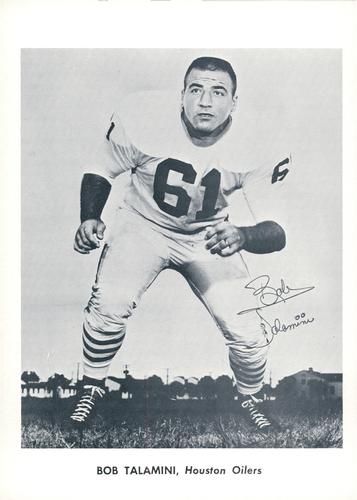
Burk asked Talamini if he had any interest in joining a team in a startup professional football organization called the American Football League (AFL).
After a short back-and-forth with Burk, Talamini received a contract in the mail. He wrote back that he would play for the Oilers if they offered him a signing bonus to cover his fare to Houston.
The Oilers drafted Talamini in the second round of the inaugural AFL Draft. He received a $500 check and a salary of $7,000, but only if he made the team.
Talamini quickly solidified his contract status when Oilers Head Coach Lou Rymkus named a starter after one practice alongside nearly 300 other players at the 1960 preseason camp.
With a professional football career now ahead of him, Talamini’s sole purpose in life became pancaking everyone in opposing colors and putting his teammates’ names in lights, and he did both exceptionally well.
His ability to drop into a bucket-step on a power sweep and punish any defender in his path was usually done as perfectly as Rymkus could draw it on a chalkboard.
Though a bit undersized for his position, Talamini clubbed his fists under the chinstrap of many defensive lineman and disoriented them on pass rushes.
With dogged determination and mallets for hands, Talamini paved lanes for the likes of Oiler running backs Billy Cannon, Charley Tolar, and Dave Smith.
He protected Oiler quarterbacks Jacky Lee and George Blanda, and eventually the legendary Joe Namath of the New York Jets.

His blocks helped put the names of Oiler receivers Charlie Hennigan and Bill Groman, and also Jets Hall of Famer Don Maynard in the newspaper, yet Talamini received little public notoriety for his efforts.
Although short of the Hall-of-Fame threshold, Talamini enjoyed a storied career and earned an impressive quantity of accolades.
He appeared in four championship games, winning two AFL titles with the Oilers and Super Bowl III with the New York Jets after Namath’s legendary guarantee.
Talamini was also a three-time first-team All-AFL honoree, a four-time second-team All-AFL honoree, and was selected to both the AFL’s All-Time Second Team and the Kentucky Pro Football Hall of Fame in 2011.
Dillon Holloway is a native Mississippian currently residing in central Oklahoma. He is a rabid football fan and a historian of the sport. He is a husband, a military officer, volunteer teacher and football coach, and emerging guest speaker. He graduated from the University of Mississippi with a bachelor’s in English and a minor in aerospace studies. He played football from pee-wee through high school, winning the 2A Mississippi Association of Independent Schools (MAIS) state championship and was named first-team all-district guard in 2011. Since his first football practice, he has always made the sport a part of his life in some fashion, and writing for Miss Ya Blue! allows him to continue to do so.
#houston #oilers #htown #houstontx #houstonoilers #nfl #astrodome #sports #star #history #football #luvyablue #missyablue #texas #throwback
